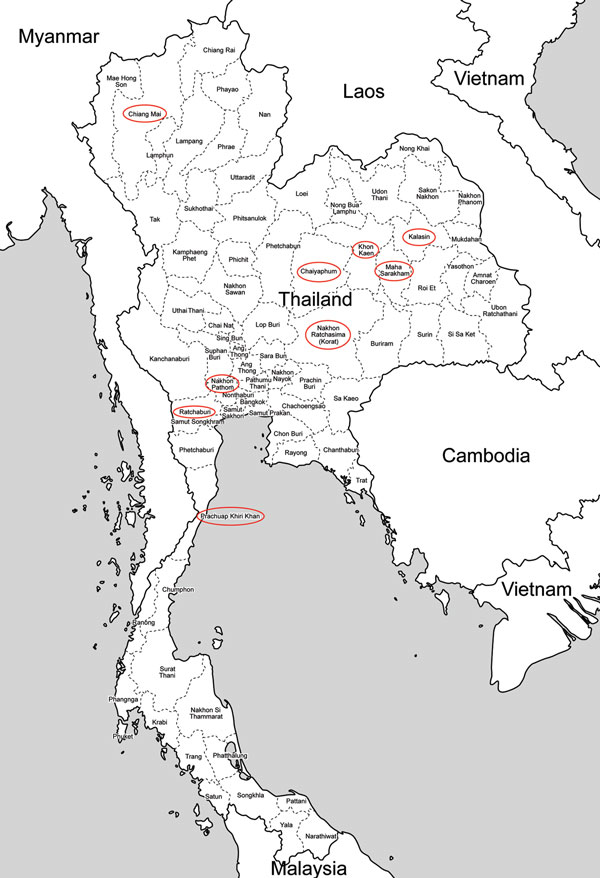Volume 19, Number 12—December 2013
Letter
Q Fever Surveillance in Ruminants, Thailand, 2012
Figure

Figure. . Provinces of Thailand in which Q fever surveillance was conducted, 2012. Red ovals indicate sources of normal ruminant placentas. Two human deaths caused by endocarditis diagnosed as attributable to Coxiella burnetii infection have recently been reported in Khon Kaen Province.
Page created: November 20, 2013
Page updated: November 20, 2013
Page reviewed: November 20, 2013
The conclusions, findings, and opinions expressed by authors contributing to this journal do not necessarily reflect the official position of the U.S. Department of Health and Human Services, the Public Health Service, the Centers for Disease Control and Prevention, or the authors' affiliated institutions. Use of trade names is for identification only and does not imply endorsement by any of the groups named above.